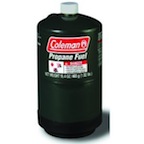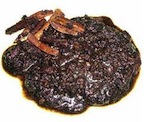Waste digesters take organic refuse (e.g., rotting food, dead animal carcasses, human or animal excrement) and process that waste by composting it into sludge, liquids, carbon dioxide, and methane. The methane (‘biogas’) is sometimes used for fuel, and the sludge and moisture extracted from the composting is spread on the ground or released into the air.
Waste digestion may involve oxygen (aerobic digestion) or may operate without oxygen (anaerobic digestion).
Proponents describe this as a new, green, and clean process. It’s really an old, brown, and filthy one. There’s nothing pristine in this: it’s waste in, waste out.
You may have heard it works like this:
It’s really more like this:
I once heard it described as analogous to human digestion, of those of poor nutrition: filth and junk goes in, and excrement, fluids, and gases come out. That’s a solid analogy.
This principle isn’t new or innovative. Even less-developed peoples, centuries ago, tried anaerobic digestion:
Anaerobic digestion has been used for centuries. During the 10th century BC, bath water was heated by biogas in Assyria. In the 17th century, Jan Baptista Van Helmont learned that flammable gases could evolve from decaying organic matter, and in 1808 Sir Humphrey Davy determined that the anaerobic digestion of cattle manure produced methane. In 1859, a digestion plant was built at a leper colony in Bombay, India.
These peoples hit upon the idea of anaerobic digestion because it was like human and animal digestion: the result mimics defecation, expectoration, urination, and flatulence.
It’s says all one needs to know that experimenters placed their anaerobic digester near a leper colony.
Tomorrow: What Goes into a Digester.






